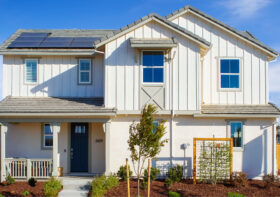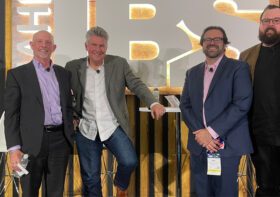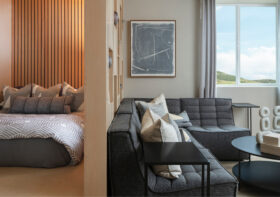Earth Day
“San Francisco in the middle sixties was a very special time in place to be a part of, but no explanation, no mix of words or music or memories can touch that sense of knowing that you were there and alive in that corner of time in the world, whatever it meant. There was madness in any direction, at any hour you could strike sparks anywhere. There was a fantastic universal sense that whatever we were doing was right, that we were winning, and that, I think, was the handle. That sense of inevitable victory over the forces of old and evil, not in any mean or military sense, we didn’t need that, our energy would simply prevail. We had all the momentum, we were riding the crest of a high and beautiful wave, so now you can go up on a steep hill in Las Vegas and look west and with the right kind of eyes you can almost see the high water mark; that place were the wave finally broke and rolled back.” – Hunter S. Thompson in his search for the American Dream.
On April 22, 1970 thousands of Americans, fed up with big industry, oil spills and war came together to rally support for a cleaner environment. Gaylord Nelson, a senator from Wisconsin and the founder of Earth Day, used the passion of the anti-war movement as well as the 1969 Santa Barbara Oil Spill to bring the environmental crisis to the public agenda. This single day brought to fruition the birth of the Environmental Protection Agency as well as the Clean Air, Clean Water and Endangered Species Acts. As architects, we have a strong obligation to design and build an environment that touches lightly upon the earth.
My first job out of Architecture school was an influential project; I was helping design sustainable communities across the Navajo Nation. For architects and planners this was a thrilling job with a clean slate. We jumped to it, analyzing the ground, placing nodes, mapping out routes, and gathering what we could of existing utility maps and sewer lines. We researched each small community, reading through hundreds of websites and trying to create a sense of place in our own minds. We spliced and diced information to create beautiful boards representing each individual community. Then we set out for weeks at a time to meet each individual Navajo Chapter.
“We live in two worlds,” a mentor of mine once said. This concept, can be seen through the difference between the world we design and the soil which we are digging into. “Man-made” and “Natural” can turn into extremely different parts, yet it is our job as designers to make them one in the same. This concept became ever more real to me as we approached the first Chapter house in our large, black SUV. We rolled into the dirt driveway of the small, rectangular, wooden structure, all excited and prepared to talk about what it means to live in a “Sustainable Community.”
It was 9am on a February morning up on Navajo and as we stepped out of the big, black beast we felt the time warp wash over us in a slow, cold wave. No one around for miles, just the small little structure with the bright blue roof and a wooden sign, which read “Chapter House.” The building was locked, so we double-checked our map and schedules, as it was not unusual for us to get lost on this unknown ground. All of the hustle and bustle, preparation, waking up early and driving for miles came to a halt as we stepped out of the beast that day and we experienced for the first time what it meant to be on “Navajo Time.”
We relaxed and waited; it was not hard to feel the slow expanse of time in this place. The mountains loomed over our heads with their jagged edges of desert rock. The sky in Arizona is like nothing you have ever seen, perfectly blue and stretching on for miles. We looked out over the Painted Desert, no sound except the cold wind whipping our faces. At least forty-five minutes later, we heard a car off in the distance putsing down the old dirt road. An older Navajo woman, all bundled up, gets out of her car, warmly greats us and beckons us into the small structure. She lights the coal-burning stove in the center of the assembly space and starts to pull donuts and pastries out of the back seat of her car. As we set up our piles of drawings and boards, the little house begins to fill up with community members, both young and old. Once the room is full and our set up is complete, it is time for us to begin. Time for us to tell the Navajo people what it means to live a sustainable lifestyle. As the room fell silent and their eyes lay upon us in the cold room with the small coal stove, an overwhelming sense of humility pulsed through our veins.
How do we talk to the Navajo people about Sustainability, on their own land? In between the two hills, which have their own names and still have sheep and cows grazing upon them. In a place where you can hear the silence all around you, smell the land and breath the clean air. Who are we to teach them about sustainability?
I have stood on a hill in Las Vegas and looked west, and what I see below me is a horde of “Ducks” and “Decorated Sheds” carving a scar through the valley below. I would love to feel the same environmental passion within the Architectural community as was evident on the first Earth Day in 1970. Everyone should take an extra fifteen minutes today to open up the California Green Code as well as the Green Sheets we place in all of our drawings and read through them. Also, take a look at the AIA’s top ten Sustainable projects of 2014. We should all be trying, everyday, to stop living in two worlds and take care of the beautiful land we have been given.










ART GALVAN
I really liked your article….I grew up in the 60’s and witnessed first hand some of the “changes” to our planet (Mother Earth). Looking at how things are today, I wonder what will be left for our future generations.
AG